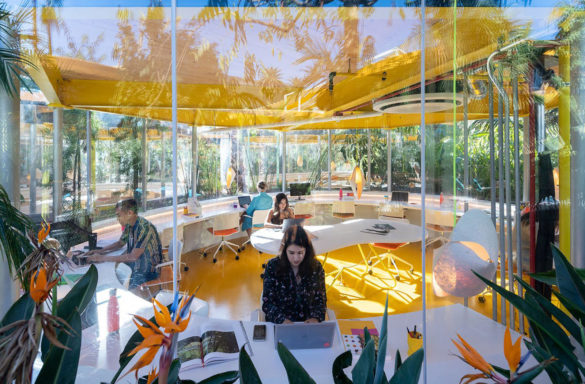ARTICLE
University campuses should be more like Glastonbury
11:34:06 22 July 2019
52°49’36”N 0°39’28”E
The following was published in Architect’s Journal (May 2019). A response to the slowdown in university-funded architectural projects, it’s a rallying cry for other – and much better – ways of creating campuses that attract, involve, and created a sense of belonging in students.
I enjoyed – and largely agreed with – Richard Waite’s analysis of the drying up of large university-based architectural projects. The gold rush is over, and thank goodness. If the reason for the gargantuan appetite among Britain’s universities for new buildings was indeed the need to attract students, then what a colossal waste of money. As research by the likes of NSS (National Student Survey) shows, students don’t choose one university over another on the basis of campus hardware, however shiny it may be.
Today’s students are after something entirely different. They are natural fans of Jan Gehl’s dictum ‘first life, then spaces, then buildings – the other way around never works’. They understand the campus as a place of people, a network of friendships, a digital and physical space, live and ever-relevant, a place of great cultural and social exchange. Informed by antiquity’s agora and increasingly modelled on today’s MIT-influenced notion of the innovation cluster, such a place is inherently fluid. Its energy is born of the free flow of people, programme and space, the last of these ever-responsive to – and therefore determined by – evolving economies of need and want.
This is not to say that university architecture is unimportant. Rather that it is but one channel for the activation of a campus designed to attract, involve and give students a genuine sense of belonging. Here in this giant petri dish of experience, places and spaces are the malleable servants of people and culture, of brand and identity, and of services and technology. The making of a truly sticky campus is a design that begins with not a building masterplan but an experience masterplan. It begins with life, with the needs and wants of students, and not bricks and mortar.
In which case, future campus (re)makers would do well to take their cue not from the building as spectacle, but from the omnichannel strategies of out-of-sector brands and organisations. Fine examples might include Airbnb, Nike and Panorama Festival. Briefly:
- The first’s where everyone wants to work, it’s offices unfinished and perpetually (re)designed by its employees.
- The second’s NYC flagship store is where everyone wants to go, its ever-morphing hub of traditional shop, customisation workshops and the digital is a bona fide new frontier experience.
- The third’s where everyone wants to play, its intricate weave of smart and soul a lesson in the art of the curated festival.
Massively customer-focused, all three – and others like them – operate an experience-first approach, are ever-alert to the now, and not one is spending the sort of money they can ill afford.
All of which, no doubt, may come as a surprise to heads of campus estates, their mantra ‘build and they will come’ is the logic that served to drive the gold rush, a logic that reverses Gehl’s dictum, and that sees universities servicing eyewatering debts, and just when Brexit and the Augar report into higher education funding threaten to suck the life out of future capital expenditure plans. Seduced by the building as icon, they’ve taken the eye off the experience ball, a mistake that may come to haunt them.
To champion the experience-first approaches of the likes of Airbnb, Nike or Panorama over the spectacle of the newly (re)built campus is not to trivialise the quality of Britain’s campus-based architectural projects. Rather, it is an approach that puts experience first, advocating a genuinely holistic strategy for creating campus universities that people want to attend, now and in the future. Less Royal Festival Hall and more Glastonbury Festival, it’s an approach that returns the architect and the building to their rightful place: the experiencing human.
Adam Scott is global creative director and founder of Experience Masterplanners FreeState. He is currently working on multiple experience-first campus projects, in Britain and in Australia
Image Credit: Glastonbury Festival



